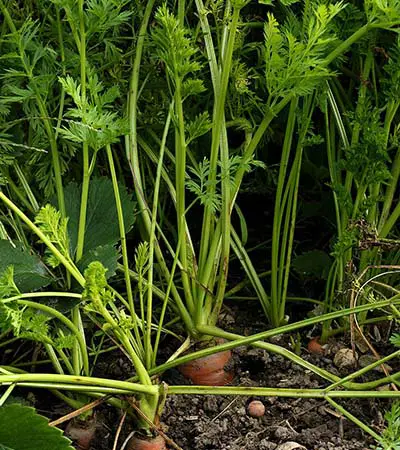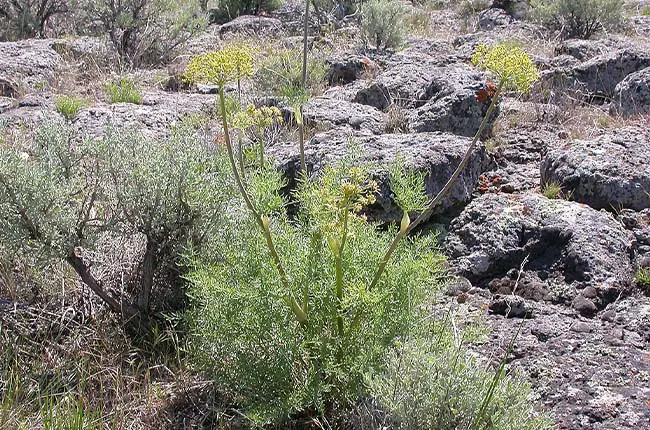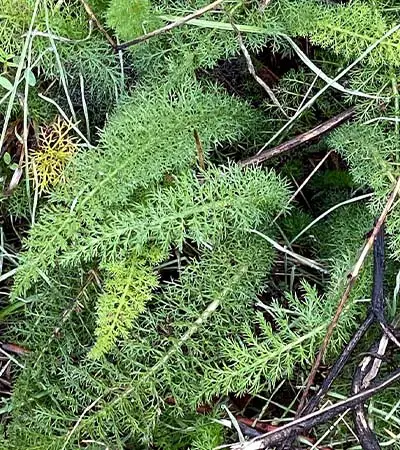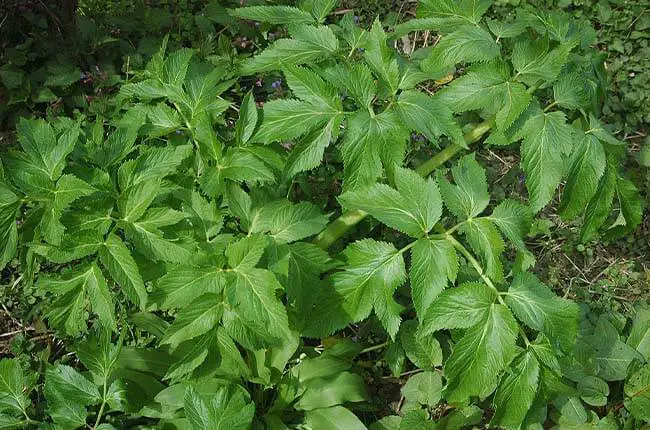Carrot lovers beware! Don’t let deadly weeds fool you into pulling the wrong, and sometimes deadly greens.
Carrot tops and lookalike weeds can be distinguished from each other by noting the leaf shape and size, plant height, flower color, stem color, and aroma of the leaves when crushed.
Check out our list of deceptive carrot top look-alikes and learn how to spot the difference. Don’t let a case of mistaken identity ruin your harvest!
Also check out our list of look-alike weeds that pose as lettuce, look-alike squash, and look-alike arugula.
What do carrot leaves look like?
Carrot leaves are delicate and feathery. They grow on long green stems and fan out to form green fronds, similar to the leaves of fern, cilantro, and parsley.
They are bright green in color, and the leaves are compound, meaning they are divided into multiple leaflets.
These leaflets sport jagged or serrated edges, giving the overall foliage a delicate appearance.
As the carrot matures, these tops can grow quite lush and can even reach heights of 1 to 2 feet (30 -60 cm).
Weeds That Look Like Carrot Tops
1. Poison Hemlock (Conium maculatum)
Like carrot tops, Poison Hemlock has feathery, fern-like leaves and produces small white flowers. Both plants are part of the Apiaceae family, which explains the similar leaf structure.
What makes it different from carrots is that its stems have distinctive purple or red spots or blotches, hence the name “maculatum” which means ”spotted” while carrot stems are green without color spots.
Also, it typically grows much taller than carrot plants. While a carrot plant might reach a height of 1-2 feet (30-60 cm), poison hemlock can grow up to 6- 10 feet (1.8 – 3 m) tall.
Its crushed leaves emit an unpleasant odor, unlike the more earthy smell of carrot greens.
It’s highly toxic and can be fatal if ingested or absorbed through the skin.


2. Queen Anne’s Lace (Daucus carota)
Also known as “wild carrot”, this plant is the wild ancestor of the cultivated variety.
The feathery leaves of Queen Anne’s Lace are virtually identical to carrot tops.
It is hard to tell this plant apart from a cultivated carrot, although its root is much smaller and does not have the vivid orange hue of a cultivated carrot.
Their flowers are also different: Wild carrot flowers are white and form a flattened cluster, often with a single dark purple flower in the center.
It’s an edible plant, but spreads quickly and is considered invasive in parts of the US.

(Böhringer Friedrich, CC BY-SA 2.5, via Wikimedia Commons)
3. Common Ragweed (Ambrosia Artemisiifolia)
This flowering plant in the Aster family (Asteraceae) have feathery, finely divided leaves arranged on either side of a central stem, just like carrot leaves.
When young, both the Common Ragweed and carrots can be of a similar size, making them somewhat easy to confuse.
But there are tiny differences that set them apart. Carrot leaves are arranged in a rosette pattern, with each leaf radiating out from a single point, while ragweed leaves grow alternately along the stem.
Also, the stem of the ragweed plant is typically more rigid and upright, while carrot tops are generally more floppy and bend toward the ground.
Carrot tops would have a distinctive carroty smell when crushed, while ragweed doesn’t have this smell.
Carrot flowers, when they do appear, are usually umbrella-shaped clusters of tiny white flowers, a classic characteristic of the Apiaceae family. On the other hand, ragweed has small, green, inconspicuous flowers that grow in spikes at the top of the plant.
Perhaps the most obvious difference is the root. Carrots are root vegetables with a long, typically orange taproot, while ragweed has a standard fibrous root system.
Common Ragweed is native to North America and is known as a widespread allergenic plant.

(Harry Rose from South West Rocks, Australia, CC BY 2.0, via Wikimedia Commons)
4. Fernleaf Biscuitroot (Lomatium dissectum)
Fernleaf Biscuitroot can look like carrot tops, with its finely divided, feathery leaves.
However, Fernleaf Biscuitroot often grows larger than a typical carrot plant and is a perennial with woody stems.
They typically grow in dry, well-drained soils which can be quite different from habitats where you would usually find carrots.
It has a thick, woody taproot that is not typically consumed like carrots.
The flowers are yellow and are arranged in a structure like an upside-down umbrella, unlike the white or pinkish flowers produced by carrots.

(Matt Lavin from Bozeman, Montana, USA, CC BY-SA 2.0, via Wikimedia Commons)
5. Yarrow (Achillea millefolium)
Yarrow leaves do look like carrot greens as they are both finely divided and fern-like.
The difference is that the division of yarrow leaves is typically more linear and less rounded compared to the leaflets of carrot tops.
Also, yarrow often grows in a more spreading manner and can reach 0.3 to 1 meter in height, taller than carrot plants. It also has a more woody stem, while carrot stems are herbaceous.
It is a hardy plant that can grow in a variety of habitats, including meadows and dry, rocky or sandy soil. Carrots, on the other hand, are typically cultivated in well-drained soil.

(Chris Armstrong, CC0, via Wikimedia Commons)
6. Southern Brass Buttons (Cotula australis)
Another close carrot lookalike, Southern Brass Buttons has finely divided leaves.
But it only grows to around 4 inches tall, forming a low mat of foliage close to the ground. Carrot plants, on the other hand, grow upright and can be taller.
It is often found in wetter areas like marshes and along stream banks.

(Harry Rose from South West Rocks, Australia, CC BY 2.0, via Wikimedia Commons)
7. Giant Hogweed (Heracleum mantegazzianum)
The leaves of Giant Hogweed are deeply divided, compound leaves that can resemble carrot tops although they are much bigger in size than carrot leaves.
This plant grows much taller than carrot plants, up to 16 feet (5 meters) in height.
Its stems are thick, hollow, and covered in coarse white hairs, with purple blotches. The plant’s sap can cause severe skin burns.

(Laval University, CC BY-SA 4.0, via Wikimedia Commons)
8. Wild Celery (Angelica Archangelica)
Also known as Garden Angelica, this plant has compound leaves with leaflets like carrot leaves although they are more triangular in shape like celery leaves.
It typically grows much taller than carrot plants and its flowers are usually greenish-white or yellowish, rather than the white or pinkish blooms of carrot plants.
It is an edible perennial.

(Doronenko 11:13, 9 April 2007 (UTC), CC BY 2.5,via Wikimedia Commons)
9. Wild Parsnip (Pastinaca sativa)
Wild Parsnip has pinnately compound, deeply lobed leaves that can resemble carrot tops.
But it typically grows taller than carrot plants and has yellow flowers.
Contact with the plant’s sap, when exposed to sunlight, can cause skin inflammation.

(Rasbak, CC BY-SA 3.0, via Wikimedia Commons)
10. Water Hemlock (Cicuta virosa)
Like carrot tops, Water Hemlock has finely divided, feather-like leaves.
But it is taller than most carrot plants, and its stems are often marked with purple streaks.
The root system has multiple tuberous roots that look like a cluster of bulbs, which is different from the single taproot of a carrot.
It is typically found in wet, marshy environments, especially in the western and northeastern parts of the US.
This plant is highly poisonous.

(Qwert1234, CC BY-SA 3.0, via Wikimedia Commons)
How To Identify Real Carrot Leaves Vs. Lookalikes?
While a number of plants bear a striking resemblance to carrot greens with their fern-like, feathery leaves, careful observation reveals differences. For instance, many of these similar-looking species have leaves that are more triangular in shape or smaller in size compared to those of carrots.
The overall height of the plant can also provide a significant clue. Carrot tops typically reach up to 2 feet (around 60 cm), whereas many of their lookalikes can grow much taller.
Flower color is another distinguishing factor. While carrot flowers display white to pinkish hues, some of their lookalikes feature conspicuous yellow blooms.
Finally, the scent can be a tell-tale sign. Crushing the leaves of a carrot plant releases an earthy aroma, in stark contrast to some of the deadly lookalikes, which emit a distinctly unpleasant smell.
Always remember to identify plants accurately, as appearances can sometimes be deceiving.
Also, check out our list of look-alike weeds that pose as lettuce.
Happy gardening!
Related
Arugula vs. Weed Lookalikes: A Visual Guide
Squash or Weed? Spotting 11 Look-alikes
11 Weeds That Look Like Lettuce (& How to Identify Them)
- Keiki Paste vs Rooting Hormone:What’s the difference? - February 4, 2024
- Top 10 Orchid Fertilizers: A Comprehensive Review (2024) - February 2, 2024
- Top 8 Soil Inoculants For Stronger Plants (2024) - February 1, 2024

